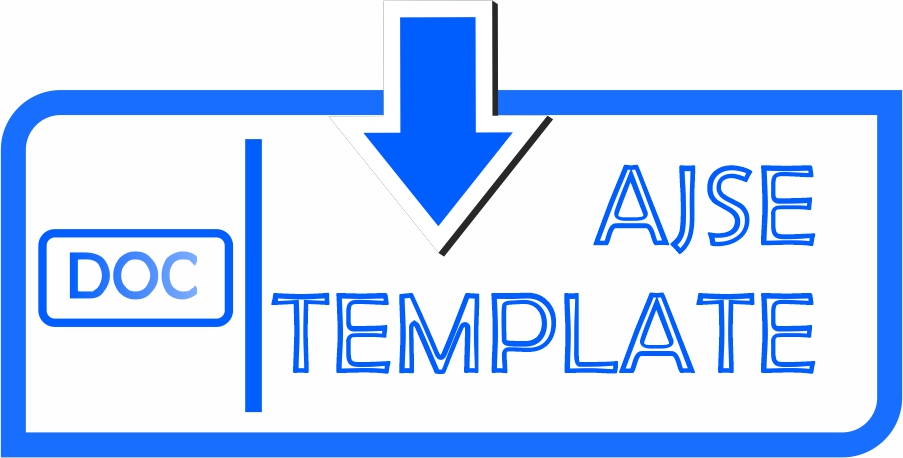THE DETERMINATION OF LANDFILL (TPA) ALTERNATIVE LOCATION IN WEST TULANG BAWANG DISTRICT OF LAMPUNG PROVINCE
Desy Renisita(1*), Sunjoto Sunjoto(2), Sarto Sarto(3)
(1) Gadjah Mada University
(2) Gadjah Mada University
(3) Gadjah Mada University
(*) Corresponding Author
Abstract
West Tulang Bawang is one of the new regencies in Indonesia which was a new expanded area that continues to grow. It is followed by population growth rates resulting in increased volume of waste. The landfill (TPA) is an important component of any waste management system. A good waste has several characteristics. To ensure the appropriate selected land, a systematic process must be developed and followed.
The study of the selection of the landfill (TPA) is aimed at finding feasible area as the location of the landfill, so that the allocation of the new landfill will be in accordance with local policies in regional spatial planning and meet the criteria of ISO No. 19-3241-1994. The role of Geographic Information System (GIS) in the management of solid waste is important because many aspects of planning and operations are highly dependent on the spatial data. The landfill selection process consists of three stages of filtering, i.e., the feasibility of the environment by utilizing Geographic Information System (GIS) to map the location of viable landfill, regional filtering phase based on the regional policy and the elimination filtering using SNI 19-3241-1994.
The results of the study showed that with an estimated population in 2033 which is 330 807 people, the amount of waste that will go to the landfill through the 3R principle reached 309.36 m3 / day or 61.87 tons / day so that the area of the required land for the sanitary landfill pattern with a 20 year planning is 17.70 Ha. The alternative location was selected by with a priority level which is located on the Panaragan Jaya Utama of Central Tulang Bawang sub-district with a land of 99.68 hectares, Tulang Bawang village districts Panaragan Central with a land area of 136.26 ha and the Kagungan Ratu village of Tulang Bawang sub-district of 74 , 65 Ha.
Keywords
Full Text:
PDFReferences
Abdullah, Hasmanto. 2011. Studi daya dukung lingkungan dalam penetuan lokasi tempat pembuangan akhir (TPA) sampah kasus di kota Bandar lampung propinsi lampung. Tesis Pengelolaan Lingkungan, Yogyakarta : Universitas Gadjah Mada
Anonim. 1994. SNI 03-3241-1994 tentang Tata Cara Pemilihan Lokasi Tempat Pembuangan Akhir Sampah. Badan Standarisasi Nasional
Anonim. 1994. SNI 19-3983-1995 tentang Spesifikasi Timbulan Sampah Untuk Kota Kecil dan Sedang di Indonesia. Badan Standarisasi Nasional
Anonim. 2008. Undang-undang Republik Indonesia Nomor 18 Tahun 2008 tentang Pengelolaan Sampah . Sekretariat Negara. Jakarta
Anonim. 2008. Undang-undang Republik Indonesia Nomor 50 Tahun 2008 tentang Pembentukan Kabupaten Tulang Bawang Barat. Sekretariat Negara. Jakarta
Anonim. 2012. Peraturan Pemerintah Republik Indonesia Nomor 81 tentang Pengelolaan Sampah Rumah Tangga dan Sejenis Sampah Rumah Tangga. Sekretariat Negara. Jakarta
Anonim. 2012. Peraturan Daerah Kabupaten Tulang Bawang Barat Nomor 02 Tahun 2012 tentang Rencana Tata Ruang Wilayah Kabupaten Tulang Bawang Barat Tahun 2011-2031. Sekretariat Daerah. Panaragan
Akbari V. 2008. Landfill Site Selection by Combining GIS and Fuzzy Multi Criteria Decision Analysis, Case Study: Bandar Abbas, Iran. Journal of Department of Surveying and Geomatics Engineering, Iran :University of Tehran
Budianto, Eko. 2010. Sistem Informasi Geografis dengan Arc View GIS. Yogyakarta :Andi Offset
Damanhuri, Enri. 2005. Some Principal Issues On Municipal Solid Waste Management In Indonesia. Tokyo:Journal. Expert Meeting on Waste Management in Asia-Pacific Islands
Damanhuri, Enridan Tri Padmi. 2010. Diktat Kuliah TL-3150 Pengelolaan Sampah. Program Studi Teknik Lingkungan. FTSL, ITB. Bandung
Environmental Engineering, fifth edition, Edited by Joseph A. Salvato, Nelson L. Nemerow, and Franklin J. Agardy.ISBN 0-471-41813-7 _ 2003, New Jersey :John Wiley & Sons, Inc., Hoboken
Gilbert M, Prihanto D, dan Suprihatin A, 1996. Konsep Pendidikan Lingkungan
Hartono, 2008. Sistem Informasi Lingkungan, Bahan ajar mata kuliah SIG. Magister Pengelolaan Lingkungan, Yogyakarta :Universitas Gadjah Mada
Murusali, La. 2008. Aplikasi penginderaan Jauh dan system informasi geografis untuk penentuan lokasi tempat pembuangan akhi rsampah kasus kabupaten muna Sulawesi tenggara. Tesis Penginderaan Jauh MIPA, Yogyakarta: Universitas Gadjah Mada
Nuarsa IW. 2005. Belajar Sendiri Menganalisis Data Spasial Dengan Software GIS GIS 3.3 untuk Pemula. Jakarta : PT Alex Media Computindo
Prahasta, Eddy. 2009. Sistem Informasi Geografis :Konsep-konsep Dasar (Perspektif Geodesi & Geomatika). Bandung : Penerbit Informatika
Salvato, J. A. 2003. Environmental Engineering and Sanitation. 5th edition. New York : John Wiley and Sons
Sejati Kunctoro, 2009. Pengelolaan Sampah Terpadu. Penerbit: Yogyakarta : Kanisiusnto- direktorat rise
Sidik, M. A., D. Herumartono, dan H. Sutanto. 1985. Teknologi Pemusnahan Sampah dengan Incenerator dan Landfill. Jakarta
Slamet J,S, 2002. Kesehatan Lingkungan. Yogyakarta : Gadjah Mada Universty Press
Tchobanoglous, George dan Frank Kreith. 2002. Handbook of Solid Waste Management. Second Edition.
Thoso, Makibinyane. 2007. The Construction of a Geographic Information Systems (GIS) Model for Landfill Site Selection. Dissertation of Department of Geography.University of the Free State.Bloemfontein
Yuliadji RW, Suryono GF, Ruben A. 1994. Aplikasi SIG untuk Pemetaan Informasi Pembangunan. Di dalamAgus W, R Djamaludding, GHendrarto, Jakarta : Remote Sensing & Geographic information Systems
Article Metrics
Refbacks
- There are currently no refbacks.
Copyright (c)
Universitas Gadjah Mada


